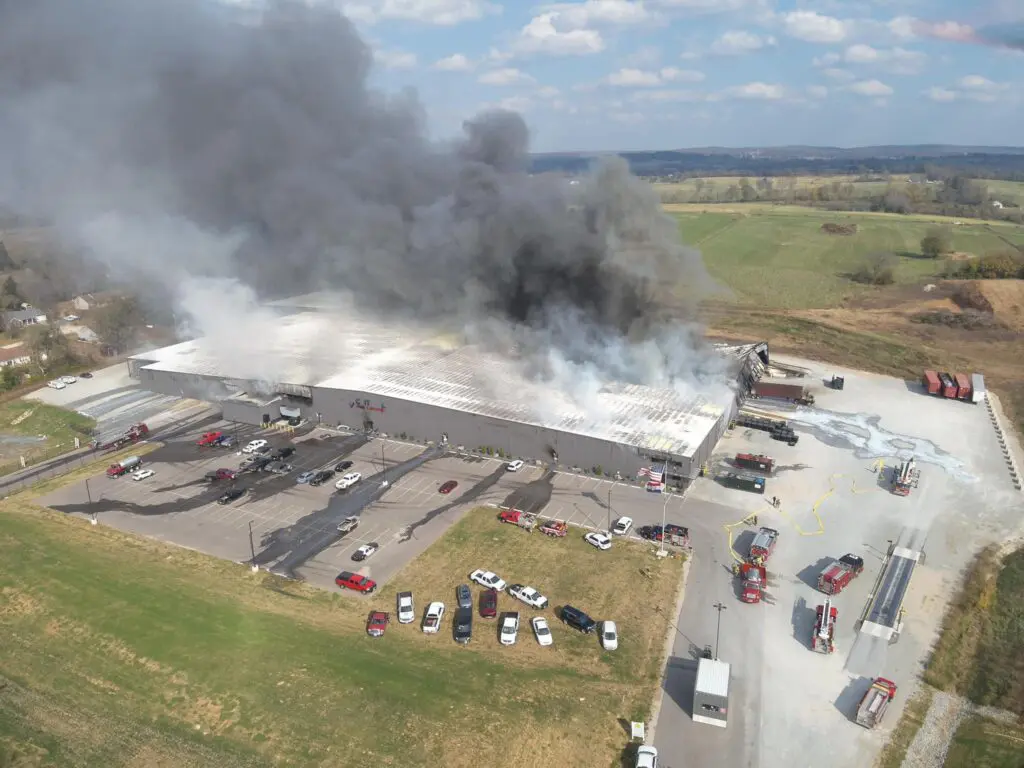While it’s common for lithium-ion battery fires to break out in homes, they can also occur at recycling facilities.
On Oct. 30, 2024, Madison County Road 277 residents were forced to evacuate due to a fire at Critical Mineral Recovery in Fredericktown, MO. The US Environmental Protection Agency (USEPA) reports that the “225,000 square-foot CMR facility processing plant reportedly deenergizes, dismantles, and processes materials associated with electric vehicles and other, rechargeable batteries for recycling and reuse.”
The facility’s official website once claimed they have “likely the most sophisticated automated and remote supervised and controlled fire suppression systems in the world,” according to the Missouri Independent. The now offline website also said the “system covers all areas where battery materials are stored or processed. It is monitored remotely 24/7 employing high-intensity industrial forward looking infrared…camera technology.”
As of Nov. 11, EPA Region 7 continues to provide air monitoring and sampling support. The cause of the fire is unknown, but it’s generally understood that recycling lithium-ion batteries involves complexity and risk. National Fire Protection Association (NFPA) Senior Technical Services Engineer Brian O’Connor says related fires can happen due to receiving a damaged battery, shredding a battery in an above-water environment, or underestimating how much stranded energy a battery holds.
As dangerous as recycling lithium-ion batteries sounds, some steps can be taken to decrease the odds of a fire. One simple step is following standards and codes, such as
NFPA 1, Fire Code; NFPA 101, Life Safety Code; NFPA 13, Standard for the Installation of Sprinkler Systems; and others. In addition to following these safety protocols, it’s also important to maintain a ventilated and cool environment, isolate damaged batteries, ensure all battery terminals are taped, and use dedicated equipment during handling, sorting, and processing.
Even though lithium-ion battery fire incidents continue to rise, future regulations may help put them to an end. The requirements of the proposed NFPA 800, Battery Safety Code are expected to include “fire, explosion, and other dangerous conditions related to battery technologies as experienced through the lifecycle of a battery: raw materials and battery production through storage, use, and end of life.” This could help address some of the problems facilities like Critical Mineral Recovery may face and make them safe.
The fire at Critical Mineral Recovery highlights the dangers of recycling lithium-ion batteries despite any safety measures they may have. Future regulations, such as the proposed NFPA 800, may help mitigate these risks by suggesting higher safety standards. Combining regulatory compliance, technology, and proactive safety management is essential for improving fire safety in battery recycling.
Image via Madison County 911.


